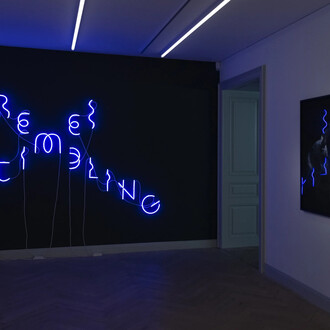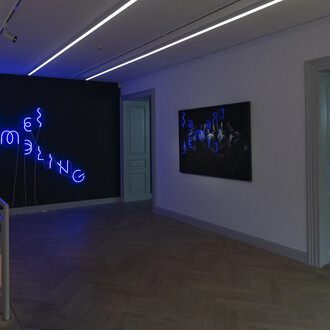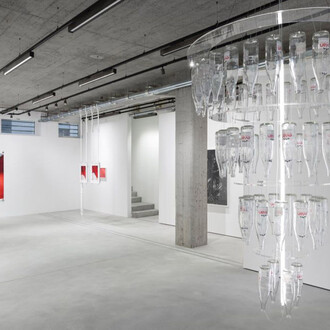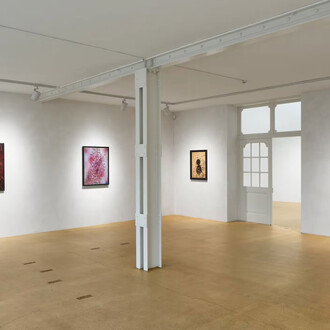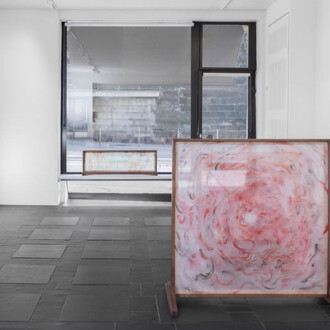The one-wall exhibition Pasticci by Hannah Sophie Dunkelberg shows three new works by the artist, which were created in cooperation with the art magazine Monopol.
As a master of transformation, the artist has developed an unmistakable visual language over the years. For example, in her series Tired horses, in which she imaginatively removes symbolic marble horses from their pedestals in public spaces and transfers them, draped on colorful sofas, into exhibition spaces – as if they could recover from their heroic legacy there. Or in her large-format, floating bows made of powder-coated metal, which hang from delicate chains and are reminiscent of car fragments due to their matt spray finish. These oversized bows – usually symbols of gift wrapping or girls’ braids – oscillate between lightness and materiality, between solidity and fragility.
Dunkelberg likes to work with contrasts: heaviness and lightness, rigidity and softness, object and space enter into an exciting dialog. Her works often begin with sketches or delicate hand drawings, which she transforms into sculptural relief images using a specially developed process – via carved printing templates and industrial processing techniques. She always accompanies this process actively and with precise craftsmanship. Since 2018, such relief works have been a central element of her oeuvre. The original drawings with organic motifs, floral forms or ornamental patterns remain recognizable on the surface.
The traces of production always remain deliberately visible in Dunkelberg’s works – they are not imperfections, but central carriers of meaning. The artist is not interested in flawless smoothness, but rather in the expressive potential of gesture, intuition, traditional craftsmanship and industrial processes. “These elements tell us something about ourselves as human beings – about our physicality, our thoughts, our actions. That’s why the signs of the creative process should remain present in the work,” says the artist.
The Italian title of the new series of works Pasticci (singular: Pasticcio) originally comes from the music and theater tradition and refers to works that were composed of fragments of different styles or sources. In the visual arts today, the term refers to works that deliberately interweave different artistic elements, materials or cultural quotations – often with a critical or ironic undertone.
Dunkelberg describes her reliefs with floral motifs and ornamental patterns as three-dimensional embodiments of graphic movements that capture the ephemeral by molding them in plastic. The starting point for these three works were plein air sketches by the artist. A plein air sketch is a quick, often spontaneous, graphic or painterly study created outdoors (French en plein air) directly in front of the subject. The aim is to immediately capture the light, mood, colors and atmosphere of a particular moment or place. The transformation of an originally two-dimensional work into a three-dimensional relief can be compared to an embossing process – instead of pressure, heat and vacuum are used to transform the plastic into the desired structure. The works are then painted by hand, making each work in the series unique.
For Hannah Sophie Dunkelberg, “Pasticci” is an aesthetic and conceptual game with references that dissolves clear stylistic boundaries and simultaneously questions social and art-historical narratives. With subtle humor, poetic precision and formal brilliance, her works challenge us to rethink the concepts of originality, authorship and cultural identity.





